25 Anys de Ciència dels Materials
25 Años de Ciencia de los Materiales
25 Years of Materials Science
Friday October 23 2020
English wil be the official language of the Workshop.
PROGRAMME:
9:00-9:30. Welcome ceremony
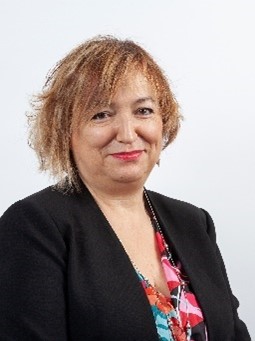 9:30-10:15. Diagnostics of COVID-19 and the emergence of new Technologies and Materials.
9:30-10:15. Diagnostics of COVID-19 and the emergence of new Technologies and Materials.
Point-of-care (POC) biosensor devices have experienced an intense development for years, but the translation to commercial products widely adopted in the diagnostics field have been restricted to few successful examples, as the glucose biosensor or the pregnancy test. There are several reasons, both technical and market barriers, for such slow translation. However, COVID-19 pandemic has evidenced how useful POC technologies could become when massive diagnostics is required for millions of users in a frequent way. The dramatic spread of COVID-19 pandemics... (Full Abstract)
Prof. Laura Lechuga, Institut Català de Nanociencia i Nanotecnologia ICN2, Spain.
Prof. Laura M. Lechuga received her PhD in Chemistry from the University Complutense of Madrid (Spain) in 1992. She is Full Professor of the Spanish National Research Council (CSIC) and Head of the Nanobiosensors and Bioanalytical Applications Group at the Catalan Institute of Nanoscience and Nanotechnology (ICN2) in Barcelona (Spain) and at the Networking Biomedical Research Center (CIBER-BBN).
The principal focus of her research is the development of novel nanobiosensor devices based on nanoplasmonics and silicon-based photonics principles for point-of-care diagnostics. Her research activities range from basic research to the demonstration of working sensing platforms, as well as their technological transfer to industry. She has been at the forefront at worldwide level in the field of photonic biosensors with many pioneering achievements. She has published over 260 articles, book chapters and proceedings, has 8 families of patents, and has presented her work worldwide in more than 360 invited talks. She has co-founded two spin-offs companies. She is Associate Editor of Analyst (RSC) and has been Associate Editor in another two Physics and Engineering Journals. She belongs to the Scientific Advisory Board of several high level research Centres around the world and have participated is numerous high-level evaluation panels worldwide. She has participated in diverse EU funded projects (some of them as Coordinator) and have been member of diverse high level EU Evaluation Panels in the 6th, 7th and H2020 Framework Programmes (including Adv. ERC panels).
She has received several prizes and recognitions along her career, as the Prize of Physics, Innovation and Technology from the Spanish Royal Physics Society and BBVA Foundation in 2016 and Fellow of the Optical Society (OSA) in 2014.
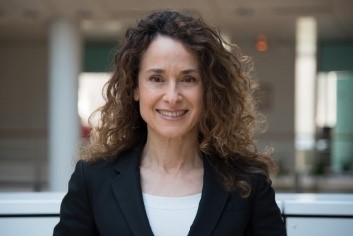 10:15-11:00. The European XFEL: new science opportunities, start of user operation and first results.
10:15-11:00. The European XFEL: new science opportunities, start of user operation and first results.
In the past decade we have seen very important developments in the field of accelerator based X-ray user facilities, with the advent of 4th generation synchrotron sources and MHz rate free electron lasers. The first hard X-ray free-electron laser, LCLS (US) became operational in 2009 and over the last decade four additional hard X-ray FELs have begun user operation - SACLA (Japan), PAL-FEL (Korea), Eu-XFEL (Germany) and SwissFEL (Switzerland). Among these, the Eu-XFEL is the first hard XFEL powered by a superconducting linear accelerator, which enables MHz rate pulse generation. A specificity of XFELs is their very short pulse duration (10-100fs) opening ... (Full Abstract)
Dra. Sakura Pascarelli, EU-XFEL (Hamburg, Germany).
Sakura Pascarelli received a Laurea in Physics at the University La Sapienza (Rome, Italy) and a PhD degree in Physics at the University Joseph Fourier (Grenoble, France). After joining the European Synchrotron Radiation Facility (ESRF, Grenoble, France) in 1993, her scientific career evolved around the development of methods to probe the local and electronic structure of condensed matter by synchrotron X-rays. In the past twenty years, her main scientific interest was the investigation of matter at extreme conditions of pressure, temperature and magnetic fields using principally X-ray Absorption Spectroscopy and X-ray Magnetic Linear and Circular Dichroism. She was in charge of the x-ray absorption spectroscopy beamlines ID24 (1997-2019) and BM23 (2000-2019), Head of the Electronic Structure and Magnetism Group (2012-2015) and Head of the Matter at Extremes Group (2015-2019). In September 2019 she joined the European XFEL (Hamburg, Germany) as Scientific Director responsible for the development of the scientific program on the four short-waved hard X-ray instruments.
11:00-11:30. Pausa Café y discusión.
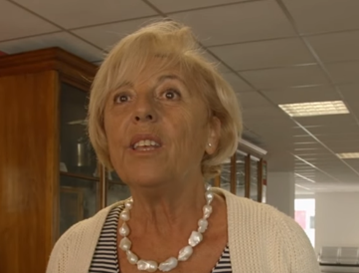 11:30-12:15. Novel analytical chromatography-mass spectrometric procedures in art and archaeology.
11:30-12:15. Novel analytical chromatography-mass spectrometric procedures in art and archaeology.
Since ancient times, a wide variety of natural organic materials have been used as adhesives, sealants, painting and coating materials. Proteins, oils, gums, natural resins and resinous materials played a prominent role, since their intrinsic properties meant that they could be used not only as painting materials, adhesives, hydro-repellents, coating and sealing agents, but also as flavours, incense, ingredients for cosmetics, medicines and mummification balms. The chemical characterization of such organic materials when properly integrated with related information from historical sources and archaeological data, has in the last few years considerably improved our knowledge of painting techniques (Full Abstract)
Prof. Maria Perla Colombini, University of Pisa, Italy.
She holds the position of Full Professor of Analytical Chemistry at the Department of Chemistry and Industrial Chemistry of the University of Pisa, and in the period 2013-2017 she also was the Director of the Institute for Conservation and Valorization of Cultural Heritage of CNR. She is the Director of the Interdepartmental Centre of Heritage Science of Pisa University and the leader of SCIBEC group (http://scich.dcci.unipi.it/). Recognized her authority in the field of Chemistry of Cultural Heritage, she is called as an expert for consulting and as a member of committees for the protection of several important works of art. She is the principal investigator of several national and international research projects for the safeguard of Cultural Heritage. She teaches in the courses of Analytical Chemistry and of Chemistry of Cultural Heritage and is the Director of the Summer School of Heritage Science at Pisa University.
Her research activity is related to the development of analytical procedures based on spectroscopic and chromatographic techniques for the characterization of micropollutants in the environment and organic materials in works of art. Particularly, the main scientific activities are related to develop innovative eco-friendly methodologies for the diagnosis and conservation of painted artefacts of archaeological, historical and artistic value; to study the long-term behavior of organic materials systems in ancient and modern paintings and archaeological wood; and to study laser effects on the cleaning of artworks. A major concern of her researches is the study of transformation of synthetic and natural polymers induced by ageing and environmental pollution by analytical pyrolysis (Py-GC-MS, DE-MS, EGA-MS).
She is author of more than 300 scientific papers, three books and has given more than 400 lectures (>70 invited) at National and International Conferences.
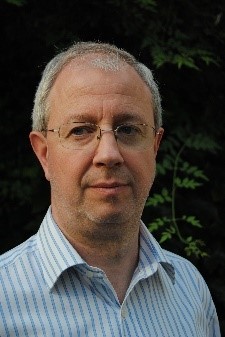 12:15-13:00. Gated nanomaterials for biomedical applications.
12:15-13:00. Gated nanomaterials for biomedical applications.
In last years, nanomedicine and nanotherapy are gaining an increasing attention as alternative to conventional treatments in main pathologies which require a selective and controlled drug administration. Numerous nanocarriers with different characteristics have been designed and applied in drug delivery protocols. In this filed some delivery strategies are based on more sophisticated designs in which nanocarriers are tailored to deliver their cargo in the presence of certain stimuli. An attractive approach in this context is related with the preparation of “gated materials”. Gated materials are predesigned to selectively deliver payloads on-command from a porous ... (Full Abstract)
Prof. Ramón Martínez Máñez, Chemitry Department, Politecnic Univeristy of Valencia (UPV).
Prof. Ramón Martínez-Máñez is full Professor of Inorganic Chemistry at the Department of Chemistry at the Polytechnic University of Valencia (UPV) and belongs to the Interuniversity Research Institute for Molecular Recognition and Technological Development (IDM) in Valencia. He is also Scientific Director of the Biomedical Research Center Network in Bioengineering, Biomaterials and nanomedicine (CIBER BBN). He also belongs to the “Joint Research Unit in Nanomedicine and Sensors” in the Hospital La Fe in Valencia and the “Joint Research Unit in Disease Mechanisms and Nanomedicine” in the Centro de Investigación Príncipe Felipe. He is an active researcher in the field of sensing and hybrid organic-inorganic nanostructured gated materials in nanomedicine for delivery applications. His publications (more than 450) have been cited over 19500 times and has an h index of 66 (web of Science; h index of 73 and 27000 times cited in Google Scholar). He has participated in over 100 research projects as coordinator. He has co-authored a scientific reference book published by Wiley in 2010 and is also co-author of 17 book chapters. Has participated in over 170 research conferences. He holds 40 PhD thesis supervised (10 obtained the Polytechnic University of Valencia Ph.D. Award). He is coordinator of the Interuniversity PhD Program in Chemistry at the UPV, which obtained the prize of the Social Council of the UPV to the best doctoral program of the 2017/2018 academic year. He has been visiting researcher at the University of Cambridge, UK. He is Co-Chairman of the journal ChemistryOpen and member of the International Advisory Board of the journals Chem. Asian. J., ChemPlusChem and Dyes&Pigments. He has participated in 42 projects in collaboration with national and international companies. He holds 29 patents, 17 of them international. Four of these patents have been transferred to companies. He is co-founder of the spin-offs Senolytic Therapeutics SL (Barcelona and Boston) and Match Biosystems. He received the Research Excellence Award 2016 from Real Sociedad Española de Química and recently the Rey Jaime I Price of New Technologies in 2018.
13:00-14:30. Pausa comida
14:30-16:30. Sesión póster
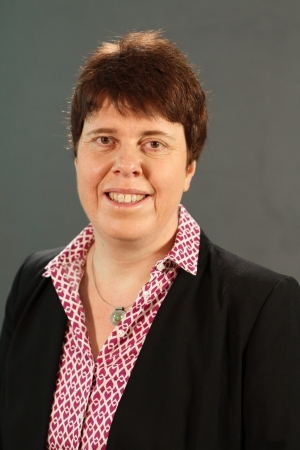 16:30-17:15. Hybrid functional organic/inorganic nanomaterials: Development, characterization and applications.
16:30-17:15. Hybrid functional organic/inorganic nanomaterials: Development, characterization and applications.
We aim to present the development of hybrd functional organic/inorganic nanocarriers for biomedical applications, smart coatings, sensing and photocatalyis. Organic/inorganic nanocapsules offer the versatility to cover a wide range of mesoscopic properties for sophisticated applications. By means of the miniemulsion process, we can design custom-made hybrid nanocapule systems for different purposes. The encapsulation and release of a great variety of payloads, ranging from hydrophobic to hydrophilic substances has been successfully achieved in a highly controlled manner and with an unmatched high encapsulation efficiency. The preparation of organic/inorganic ... (Full Abstract)
Prof. Katharina Landfester, del Max Planck Institut für Polymer Forschung, Mainz (Alemania).
Prof. Katharina Landfester received her doctoral degree in 1995. After a postdoctoral stay at Lehigh University (US), she joined the Max Planck Institute of Colloids and Interfaces (Germany). From 2003 to 2008, she was full professor at Ulm University (Germany). Since 2008, she is director at the Max Planck Institute for Polymer Research. She was awarded the Reimund Stadler prize and the prize of the Dr. Hermann Schnell Foundation, followed by the Bruno Werdelmann Lecturer (2012) and the Bayer Lecturer (2014). She has published more than 650 papers in international journals, 30 reviews and holds more than 50 patents.
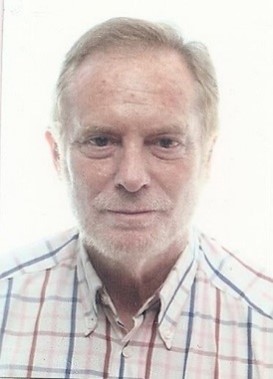 17:15-18:00. The energy transition in Spain (2020-2030).
17:15-18:00. The energy transition in Spain (2020-2030).
Among the largest regions of the world, Europe is probably the one that best exemplifies the adoption of energy and climate measures as recommended by the Paris 2016 Agreement on Climate Change. In this sense, every country of the EU had to elaborate a national energy and climate plan (2020-2030) that in Spain was called by the acronym PNIEC (Plan Nacional Integrado de Energía y Clima). According to this plan, the main target was to reduce emissions by 40% from 1990 levels. A very significant aspect of the power electricity system is the daily pattern of the power demand, which for Spain is shown in the figure below and represents the hourly (0-24 h) average... (Full Abstract)
Prof. José Manuel Martínez Duart.
Professor José Manuel Martínez-Duart is Master in Physics by the University of Michigan in 1965 and PhD by the University of Pensilvania (1970). He was hired as Visiting Research Scientist at the IBM Research Center. Since 1980 he is Full Professor of Solid State Physics at the Universidad Autónoma de Madrid, where he was later Director of the Institut of Physics of the Estate of CSIC and of the Sede C of the Institute of Materials of Madrid. He was Founder-President of the Spanish Materials Society and, during 2000-2001 President of the European Materials Research Society (E-MRS), Society in which he now is Senator. He was also Founder-President of the Specialized Group of Energy of the Real Sociedad Española de Física. In the field of research, he has more then 300 international publications in the field of thin film and nanostructured materials. In this research field he has directed 15 PhD Thesis. He has authored several books edited by Elsevier, Springer etc. The last of them, published in 2018 with the title “Nanotechnology for Microelectronics and Photonics”.










